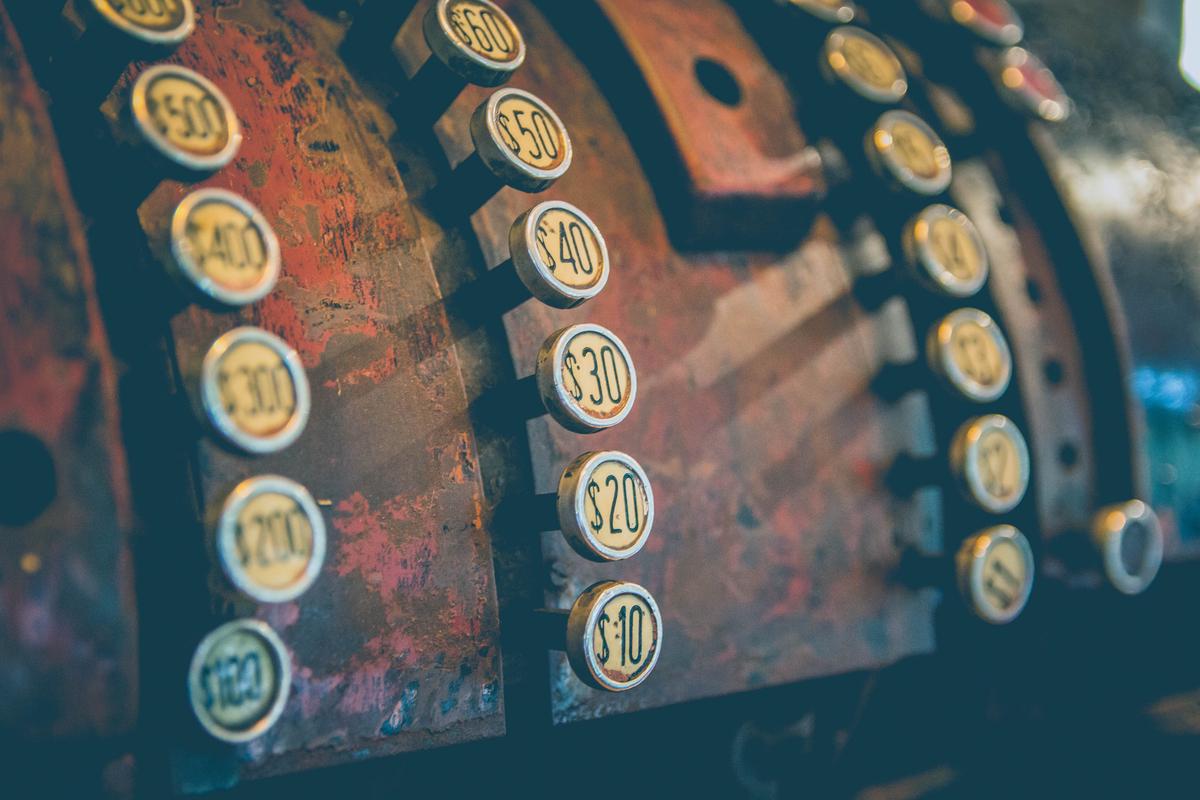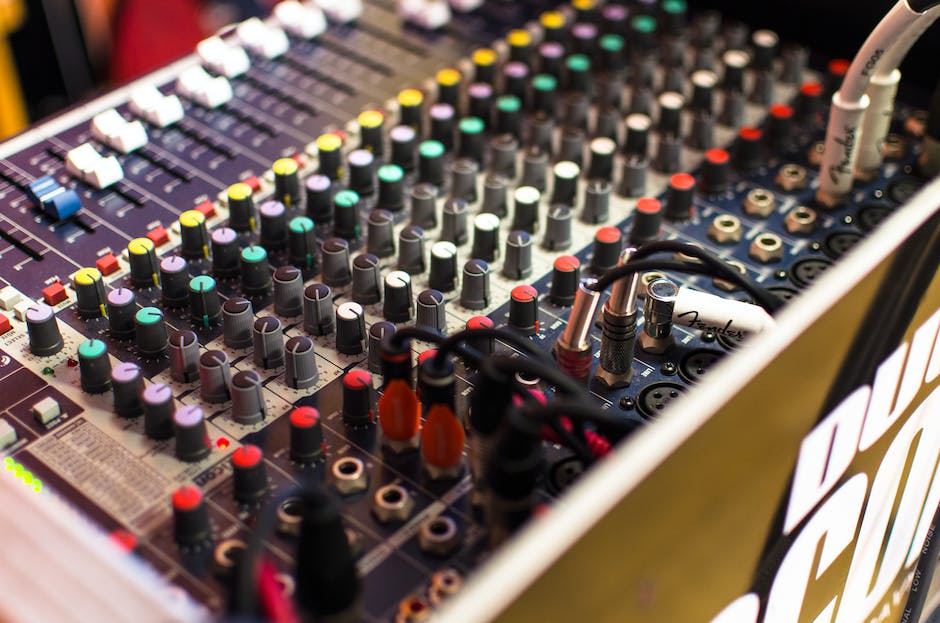Since the invention of the phonograph by Thomas Edison in the late 19th century, the recording studio has continuously evolved, shaped by technological developments and the creative pursuits of those who use them. From the initial monophonic recordings on phonograph cylinders to sophisticated digital recordings in modern-day home studios, the journey of the recording industry is a tale of relentless innovation and artistry. This odyssey not only charts the rise of new technologies but also highlights the indelible impact they have had on various music genres and their creators – giving birth to new means of expression and redefining the boundaries of musical artistry.
Early Invention and Rise of Recording Studios
The Sonic Toolbox of Thomas Edison: How the Wizard of Menlo Park Paved the Way for Recording Studios
Music, that ethereal glue binding hearts across continents, bears a rich, pulsing history studded with brilliant innovators. At the heart of this tale of harmonies and crescendos is one pivotal personage, draped not in the velvet of a performance artist, but in the coat of an inventor—Thomas Alva Edison. Known as the Wizard of Menlo Park, Edison’s groundbreaking work on sound recording and reproduction stands as an iconic cornerstone in the narrative of music creation and distribution.
Edison’s gift to the music world began simmering in his inventive mind towards the late 19th-century, culminating in the creation of the phonograph in 1877. Sketching out sounds on smoked tin foil, this rudimentary device was the world’s first mechanism to capture and reproduce sound. Its invention sent ripples of excitement and anticipation through the realms of music and technology.
Now, imagine this: No longer were people required to sit within the acoustics of a concert hall or by a gramophone to savor the sweet strains of music. With the phonograph, music could travel, triggering the slow decline of music as a one-time experience, limited by location and timing. This monumental shift formed a link in the chain leading to the rise and development of recording studios.
Edison’s initial model of the phonograph gave way to the evolved wax ‘phonograph cylinder’, marking another leap forward. The 1880s and 1890s witnessed the cylinder’s sophisticated iterations rendering it an ideal tool for recording and playback in the realm of commercial music.
These advancements spurred musicians and songwriters to move towards the paradigm of recording and distributing their works—an exciting concept in an era when ‘live’ was the only way to experience music. By the early 20th century, the recording studio had emerged from the shadow of Edison’s invention as a space brimming with potential and buzzing with activity.
Recording studios soon became magnetic hubs, luring artists with the enchanting promise of sending their music across the ethers. Not merely a locale for capturing sound, studios offered an opportunity to shape and manipulate musical elements, forging a new frontier in the world of music creation. Producers and sound engineers evolved to be alchemists in the crucible of creativity, enhancing the raw materials offered by the artists.
The poignant echoes of blues, the jubilant horns of jazz, the resonating beats of rock ‘n’ roll—all were brought to the eager ears of fans through records, an enduring testament to the genius of Thomas Edison’s invention. From humble beginnings with the phonograph, Edison’s gift of sound recording spurred the rise of recording studios, turning them into iconic landmarks in our musical landscapes.
In our modern world of streaming and digital downloads, the reach of music extends far beyond the intimate circle of live performances. Yet, the beating heart of this music—whether it emerges from garage bands, celebrated artists, or anywhere in between—still pulses within the walls of recording studios. Candidly, there is no such tale of vibrant musical evolution without acknowledging the quiet but staggering influence of Thomas Edison and his game-changing inventions.
Here’s to you, dear readers: may we all continue to savor the sonic richness gifted to us by innovators past and present. Edison’s legacy thrums in the veins of every song, every beat, and every strum, giving the world the ultimate gift—an observer’s seat in the symphony of life.

Photo by alvarordesign on Unsplash
The Analog Era and the Impact of Multitrack Recording
Multitrack recording swept the music industry like a symphony that intoxicates, revolutionizing the landscape and enveloping every corner with its irreplaceable beauty. The arrival of multitrack systems was not just a technical advancement, it was a monumental leap that served as a catalyst for artists to paint their musical masterpieces with beautifully designed soundscapes and intricately layered harmonies.
The advent of multitrack recording exponentially expanded the palettes available to the creators, making the sound studio an instrument of boundless possibilities. Conceived initially by music engineer Ross Snyder and then manufactured by the illustrious Leslie Herbert, the users of this technology suddenly had the power to form a sonic tapestry unlike anything heard before. They could separately record individual elements, allocate dedicated tracks for each component, and then magically weave together to form an exquisite audial picture.
The introduction of multitrack recording, more than anything else, gave the artists the power of control. It stripped away the reigns held by the hands of time, thus eliminating the necessity of a band needing to record a song in one go, a feat of extraordinary performance. Isolating every instrument on different tracks allowed for an endless number of takes until they found the one that best encapsulated their vision. This concept of control did not just stop at enabling them to perfect each instrument’s sound. It allowed artists to arrange and rearrange the components at their leisure, layer sounds, and experiment; thus, expanding the musical horizons.
Furthermore, multitrack recording fostered a lively environment of experimentation, transforming seeds of creativity into lush trees of artistic expression. Spectacular effects such as phase shifting, reverb, delay, or even something as subtle as a gentle whisper laid over a thunderous drum beat became, not just possible, but a cornerstone of beautiful artistic expression. Musicians could manipulate volumes, alter speeds, or pan sound across speakers, creating an audial narrative that carried listeners not just through time, but through space.
A fantastic monument to this is The Beatles’ Sgt. Pepper’s Lonely Hearts Club Band, a record that stands as tall today as it did when it was released. The multitrack recording technology allowed the band to use the studio as an additional musician, giving birth to sounds and effects that were impossible to recreate live, thus expanding the boundaries of pop music to create a brilliant concept album.
The impact of multitrack recording has echoed throughout the ages, shaping the direction of contemporary music and establishing a vital foundation for the age of digital music. From classic rock to hip hop and electronic music, the fingerprints of multitrack recording are embedded deeply in the texture of modern music. Not just production, it brought a revolution in the distribution too. Today, in the age of streaming and digital downloads, multitrack recording has empowered artists to produce music in their homes, breaking away from the constraints of high-end studios and record labels. In evoking a passion for music, it has transformed not just the listener, but the creator too. And in doing so, the world of music, forever became a galaxy filled with starry melodies, dancing to the rhythm of this remarkable invention.

Digital Revolution and Birth of Home Studios
After we’ve swept through the hallowed halls of sound’s shimmering history, it’s time to glance into the crystal ball of music’s future. From the foundation laid by Thomas Edison, a seismic shift in the world of music production ensued as we embraced the digital revolution. This transformative era has seen recording studios sprout in the most unlikely of places – our very own homes.
Once, the studio was a sanctuary exclusively accessible to establishes musicians, laden with complex machinery and operated by skilled professionals. The advent of home recording software and equipment sparked a democratization, enabling anyone with a laptop and passion to become a music creator. Thanks to this digital revolution, we’ve ushered in an era where music production has become boundlessly accessible, disrupting the traditional monopoly held by commercial studios.
No longer bound by the financial constraints of booking high-end studios, artists retain full control over their recording process. It’s an unrestricted world, gifting novices the liberty to explore, experiment, and harness their creativity without time or money limits imposed by third-parties. The rise of Digital Audio Workstations (DAWs) like Pro Tools and Ableton Live has helped artists delve into a sonic playground, experimenting within a digital sandbox full of limitless potential.
Home studios are increasingly efficient, not just economically, but creatively too. With advanced software capable of emulating an entire orchestra or the echoic resonance of the Grand Canyon, there’s no limit to what can be achieved within the cozy walls of a bedroom. The ability to foster the intimacy of a self-recorded project offers a texture that often cannot be replicated in commercial studios. One can’t help but think of albums such as Bon Iver’s ‘For Emma, Forever Ago,’ recorded isolated in a Wisconsin cabin and characterized by its rusticity and warmth.
While one may argue that this accessibility instigates an oversaturation of music production, it interestingly serves to foster community and collaboration. Increased interconnectivity has paved the way for artist collaboration across geographical borders, a trend that has not gone unnoticed. Musicians can now blend genres, mix ideas, and share their sound across platforms and continents like never before.
Home recording can be seen as both a catalyst and a response to the decentralization of the music industry. As record labels lose their stranglehold on production and distribution, musicians are no longer confined to signing record deals that may jeopardize their artistic integrity. Direct-to-fan platforms such as Bandcamp and Soundcloud offer musicians an opportunity to distribute their music and build a following without industry gatekeepers.
In a world where Tiktok trends hold influence over Billboard charts, is it arguable that the times of mystique-laden rockstars reliant on record label marketing are ebbing away. The current musical landscape is one of transparency, connection, and collaboration. We now find ourselves in an arena where music creators not only control their sound but their brand and distribution.
While traditional studios retain their charm, bearing the weight of musical history, the digital revolution has created a thriving new ecosystem in home studios. Consequently, it has developed a music landscape rich in cultural diversity, where anyone is capable of creating, sharing, and synergistically enjoying music in the most personal and innovative ways. In the garages, bedrooms, and basements of the world, we’re all inventing new songs, testing the stretch of our imaginative skins, and shaping the future of the music industry.
This was exactly what Thomas Edison did with his phonograph creation over a century ago. Fitting, isn’t it? He not only invented a device but a way of thinking about sound that still echoes loudly in our collective, melodic consciousness. The democratization of music creation is imprinting a similar mark on the future fabric of our world. And one thing is for sure: it’s a thrilling moment to be part of the remarkable odyssey of sound.

Future of Recording Studios and The Influence of AI
After an exciting trek through the evolution and technological innovations of the music industry, we now find ourselves at the brink of a new frontier in music recording: the advent of Artificial Intelligence (AI). Gazing into the future of what may seem like science fiction is now conceivable through the rapid advancements of AI.
Artificial Intelligence promises to alter dramatically not only the process of recording music but also the very fabric of sound manipulation. Think of it as a digital extension of Thomas Edison’s phonograph cylinder, harnessing the powers of algorithms to mold music into unpredictably beautiful forms. The efficient automaton of creative functions might set off a ripple of liberation for artists, granting them free reign to channel their authenticity into each piece of work.
Imagine a future where musicians lean into unique, AI-based strategies to elevate their work. Incredible technological tools offering the potential to remix, trigger effects, or even compose a baseline in real-time during a live performance. These advancements could essentially transform a live show into a studio session, underlining the limitless potential of AI within the recording studios of tomorrow.
The influence of AI extends to the sound engineering realm too. The development of intelligent audio mastering tools, all thanks to AI’s learning algorithms, have started to streamline the mastering process, making professional-level audio mastering nearly achievable at the push of a button. These advancements in AI-driven mastering tools, coupled with digital audio workstations’ democratizing powers, promise to blur the line between DIY home studios and large-scale professional recording spaces.
Similarly, AI tools are being designed to understand an artist’s musical style intricately, creating the possibility for AI-assisted composition. While this may instigate fears of machines replacing human ingenuity, it’s crucial to view these advancements as enhancers rather than replacements. Think of the Beatles, harnessing multitrack recording technology to synthesize Sgt. Pepper’s Lonely Hearts Club Band. In the same vein, the AI of the future might serve as a partner to artists, amplifying their creative powers like never before.
However, this revolution also bears the potential to reconfigure the music industry’s economics. AI might disrupt traditional revenue ecosystems, challenging age-old legal frameworks around copyright and royalties. It’s within this dynamic landscape that a new standard will be established—one that merges technology with creativity, transforming the music industry as we know it.
The fabric of the music industry is set to experience profound changes driven by the blend of artificial intelligence, sound engineering, and the unyielding spirit of human creativity. Thomas Edison’s inventiveness paved the way for the evolution from phonograph cylinders to digital audio workstations. Now, AI leads us into an era where the line between creator and creation blurs into an unimaginable symphony. As artificial intelligence plays an increasingly influential role, the music world as we know it stands on the precipice of extraordinary reinvention.
Change has been the only constant in the music world. From the invention of the phonograph to multitrack recording to digital production tools, the music industry’s evolution shows no signs of slowing down. The powerful conjunction of artificial intelligence and music is bound to produce symphonies unheard of, notes unstruck, and rhythms unimagined. As we stand on this cusp, one can only imagine the new harmonies that will infuse the future of music recording. Embrace the dawn of this transformative era – the next musical revolution is upon us.

As we gaze into the future of recording studios, we find ourselves standing on the cusp of an era where artificial intelligence (AI) seems ready to upend conventional norms. Yet, it is not without its host of ethical dilemmas and questions about its economic impact on the industry. The potential of AI to revolutionize the recording process—from guiding the mixing and mastering processes to transforming music production—promises exciting possibilities. However, this brave new world also requires us to confront and navigate the intricacies and implications of this emerging technology. Thus, the evolution continues, with each era redefining what recording studios are and can be, carrying forward the legacy of innovation spurred by Edison’s phonograph.

Comments.
Currently there are no comments related to this article. You have a special honor to be the first commenter. Thanks!